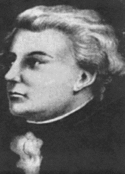Roll Call covers parking reform
Roll Call, one of Capitol Hill’s newspapers, ventured beyond the federal realm to cover DC’s parking reform proposals. The lede:
Walkability, transit-oriented development and smart growth are buzz words of modern urban development. But for more than half a century, D.C. zoning rules have supported automobiles as the main method of transportation in the city.
The rest of the article is only accessible to subscribers and Hill staff. It gives a good overview of the issue and liberally quotes Cheryl Cort of the Coalition for Smarter Growth. I also spoke with the reporter, Melissa Giaimo, at length to provide her with a general understanding of the issue; she also used the statistics on car ownership and non-automobile commuting.
Supporters of the new parking plan believe that rejecting 1950s zoning rules is a return to the thinking of Washington’s original city planner, Pierre L’Enfant.
The proposal, Cort said, is “with the great tradition of the L’Enfant plan—revolving around walkability and streetcars.”
Opponents of parking reform often claim to be defending L’Enfant’s legacy, but (the fact that we didn’t really implement L’Enfant’s plan aside), defense of high parking minimums is instead promoting the legacy of Robert Moses or his DC counterpart, the author of our 1958 zoning code, New York consultant Harold Lewis.

